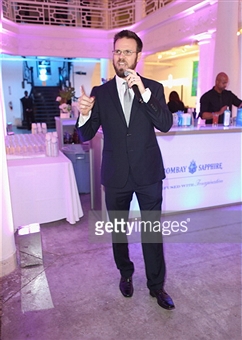Life Is Art presents Art/Work Connections #17: Gallery Prep with Reed V. Horth
Tuesday, March 11, 6:30pm-9:00pm @Yo Space. 294 NE 62nd Street, Miami, FL 33138 (Little Haiti) www.yo-miami.com/yo-space
Speaker: Reed V. Horth, Gallerist, Curator, Robin Rile Fine Art www.robinrile.com
Reed’s Lecture:
Good Evening.
My name is Reed V. Horth. I am the President of Robin Rile Fine Art. For 12 years I managed galleries in Tampa, Miami, Palm Beach and Sarasota, and for the past 6 years I have been an independent broker and curator specializing in 20th Century Masters like Picasso, Dali, Miró and Warhol.
A few years ago Life is Art asked me to lecture on “How to Get into a Gallery”, which as it turns out, could have alternatively been titled, “How NOT to get into a gallery”. How many of you had a chance to attend that lecture? Anyone? Well, the text of that lecture is part of my blog at RobinRile.com/blog if you wish to refresh yourself on what we covered. If you did see it, you will probably notice me reiterating some of the points which were made in the earlier lecture simply because I feel they are important. But, we will also be delving into some new things which, in some instances may challenge you in, perhaps… uncomfortable ways.
Which brings me to my first point… If you are here, you are here to further yourself as a professional artist. This is your career. Not a hobby or a dodge to get out of real work. This IS real work, despite what some haters say. Any of you ever hear, “Why don’t you get a real job?”. Yeah. I got a lot of that too. Well, this is your career and let’s face it… You want to make money doing it. Right? So does the person next to you. And the person behind you and the person in front of you and the person kitty-corner to you. Everyone in this room is ambitious. Otherwise you could be watching TV on your couch or playing video games. But, you are not. YOU are here looking for a kernel of wisdom which you can then use to turn a corner, and build upon professionally. That is a good start. You want to learn and you want to succeed. Also remember… The gallery owner who you are going to ask to spend their time, money and effort on your behalf wants to be successful too.
So what are you doing to deserve a shot?
Think of a football or basketball team. Lots of players aspire to in the pros. They all feel that obviously they are BEST of the BEST. Right? But still, of those great players, only a few make it to play in college ball. Even fewer to the Pros. Fewer still play in the Super Bowl and fewer still go to the Hall of Fame. What are top tier athletes doing that the rest are not? They are constantly refining every aspect of their game, self-examining to see what they can do better. They find their weaknesses and challenging themselves to turn those weaknesses into strengths. They do things to separate themselves from the pack. And they never EVER say that their work is good enough.
If you think your work is “good enough”… ask yourself. When has “good enough” ever been Good Enough? Every day, you must ask yourself… Am I putting the best product out there? Am I standing out from the pack? Am I doing it professionally? Am I even a professional? These are uncomfortable questions. I get that. But the answers will determine what actions you have to take in order to place yourself in the best position to find solid representation AND determine what galleries you should realistically shoot for now and which you should target as longer term goals.
So, let’s touch on why galleries FEAR YOU! Galleries fear you because…. Time is money.
How many of you have websites? Facebook pages? Most of you, I would guess. The world has changed dramatically in the past several years. However, the buying public is still taking some time to catch up. Is it unheard of to sell a $100 work on the internet? Not at all. Many of you have probably already done this and maybe more. Anyone?
What is the most expensive thing you have sold online? Had that buyer ever seen your work in person before?
How about $5000? $10,000? $100,000. It is tough. The mentality of someone spending $10,000 is different than someone spending $100 or even $1000. Generally anyone spending $10k and above on work has probably seen the artist’s work in person at some point. They can make a purchase decision based on prior experience. This also means you need to have your work shown in as many charity events, gallery, hotels, lobbies, and other heavily trafficked areas to create a frame of reference for as many people as you can.
However, when you do this, understand that your personal marketing efforts may not jive with galleries once you do get selected for one. Gallery owners may ask for regional exclusivity. Like, gallery XYZ is the ONLY place you can get your Art in this specific area. Now, if you continue your marketing in that area, you may be providing a disincentive for Gallery XYZ to show your work. Because many clients will wander into the gallery, see your work in person, gain a frame-of-reference, then leave. Then they will get on their IPhone and Google you, find your Facebook page and buy from you directly. This is great for you in the short term, but what about the gallery? Maybe you say, doom on them. They should have sold better. They should work harder. Maybe you are right. But, no gallery can convey the same things about your art that you can…. Provided that you can actually discuss your art with prospective buyers. Which, is not always a given. Some artist simply cannot do this without sticking their foot in the mouths. Trust me, I’ve seen this. No, what you do by selling directly, is taking away the incentive for galleries who have the capabilities to sell dozens, if not hundreds of your pieces. Maybe you may sell one. But, they have access to databases you do not have. They have expertise that you do not have and they have overhead you do not have.
Why do I share this? Because you, as professionals, must know what every gallery fears about YOU. They invest time, money and effort into you and you sell behind them. While this is not a new phenomenon, it is made more simple by modern media like Facebook, Twitter and all of the other gadgets that are difficult for someone like me to figure out.
Many of you say… I would NEVER do that. But let me tell you…. I recently got cheated on. No. Not what you are thinking… My wife is saint. But, by an artist. Now, professionally I do not specialize in living artists. The niche I have fallen into does not give me the time to build necessary marketing structure for emerging artists. It just sort of worked out that way. However, in my previous galleries I had developed a relationship with a living artist and sold a BUNCH of his work. He contacted me recently and said he needed money. So, I started selling his work to help him get back on his feet. I sold several dozen sculptures and fed him tens of thousands of dollars in only a few short months. Then, he met one of my clients during a delivery and, despite the fact that we had a written agreement not to sell directly to my clients, he sold him something. This artist effectively dis-incentivized me from ever selling his work again. He may have made a few grand from the sale, but I have 27000 clients internationally. He’ll never sell to any of them ever again. Period.
To get into a gallery, the gallery has to have a sense that their investment in you is sound. That you are worth that investment, you will abide by your word, and your work can make them money in the process. Be a professional first, keep your word. last and always.
What is the Flip-Side. Well, what do YOU fear about galleries. The big fear I hear from artists about is that the people representing your work also have to be professionals.
An artist has one asset… Their Art. You have to do all you can to protect yourself from bad people. Remember, Time is Money. Take some time to research galleries in your area and talk to people about their reputation. Google them. Google the salespeople and the owner. Check out what they sell and how they sell it. Are they trustworthy? Do they pay their artists? Do they pay their bills? Is their lease about to get yanked? Is the owner a slick-talking, shiny-haired art thief? Can they even sell art? Much less, can they sell YOUR art?
Getting into a gallery is great, but if they can’t sell, don’t pay their artists or are getting evicted soon, you are better off not getting into that gallery at all. Further, it is better to know what you are getting into beforehand. Make certain that the galleries you chose to work with are not just pretty faces who will not give your work its due.
Learn about the gallery’s style. Learn to explain to them how you fit what they already do and how your work can benefit them and the other artists they show. This will show that you have done your homework. Do not demean what is on their walls (I had that happen once. It did not turn out well for the artist. He said something like, “This is all crap. What you really need is me!” Not a good approach.) Be confident that your artwork will augment their inventory in good ways. Find out what each gallery does well and whether or not your work fits that. Are you a photographer? Know whether they carry (or like) photography. It will save you time and heartache in the long run. Lots of artists ask me to rep their work, but have not taken 5 minutes to research what I do and why it does not work in my niche. Galleries have client bases built over many years and they will gear any incoming work toward the clients they already know buy… And repeat buying. If you do not fit what these buyers are expecting then the gallery is not inclined to feature your work.
Make certain that your work is unique enough to stand out but not so far juxtaposed to what they feature. Don’t expect the “Gallery of Surrealism” to feature your pleasant watercolors of pastoral landscapes. It is not their genre and they probably have no clients for your work. They would be fighting an uphill battle. Wall space in any brick-and-mortar gallery is extremely limited. In a very real sense, that wall space has to pay their rent as much as you see it paying yours. So, you have to present something that they legitimately consider investment-worthy for them. While you may think your work is the greatest thing since sliced bread, their rent is dependent on picking only the best artist to spend their time and money on. They probably are not going to put your work next to a Picasso if you are just starting out. However, they might be willing to place you next to strong national or international talent if you distinguish yourself as a worthy candidate for them.
Be Brutally Honest with yourself. I know you want to be in the best gallery. But, does your work fit that gallery? If not, what can you do to either change your work or your expectations. Aspiring to the best is great, but no one ever got to play pro football without learning how to play the game first.
Make a short-list of galleries which you honestly feel suit your style and level of expertise. Are all of them local? If so… Why? Remember earlier I said galleries will probably want some sort of regional exclusivity? Well how about one gallery in Miami, another in Boca, one in Ft. Myers, one in Orlando, One in Tampa. So on an so forth. Do not be afraid to get outside of your comfort zone and travel. Research galleries in a variety of cities which are relatively easy for you to get to on short notice, and might also have an interest in your work.
Once you find one that seems to fit the type of work you do, CALL them. Do not email them. Don’t text them or otherwise do something that might be perceived as unprofessional. Call them and ask who the decision maker is for portfolio submission. Ask if they are even accepting portfolios presently. If so, what is the preferred method of submission. Be respectful of their time and they generally will be respectful of yours. Remember time is money. They get a LOT of artists submitting portfolios. The only ones that got through to me were the ones that were professional, creative and courteous of my time.
Never underestimate the power of the person picking up the phone. While that person may not be the actual decision maker, they ARE the gatekeeper. If you are dismissive, arrogant, or unprofessional, the boss will know about it one way or the other, no matter how good your work is. Or, you will simply get “lost in the shuffle”.
(Funny aside: When I first started in this business in 1996, people would submit portfolios in slides. It was the most difficult way to see anything about art. It was awful. It makes me so sick to even SEE slides now.)
Anyway… Nowadays, most galleries will expect samples to be emailed. Do not send photos that are High DPI or oversized shots. Take them into Photoshop and decrease the size to something manageable. Bear in mind, many of these owners will be seeing your work on their IPhone, tablet or mobile device. So make them clear, but not huge. And when you send them, do not send too many, unless specifically directed to do so. If they don’t like the first 5 works you send, they probably will not like the 6th. Conversely, if they do like the first few, they will ask for more. Once you submit your work, wait a day or so and follow up to make certain they were received. Oftentimes, attachments cause emails to be sent to SPAM. Call and ask if this was the case. Once they have the photos, ask when a good time might be to meet the decision-maker on the phone or, more importantly, in person. You “welcome the opportunity to show them your work firsthand, because photos simply do not do it justice.”
Just like in every job interview process, don’t expect a 100% hit rate. Target galleries which make sense for your level of expertise. Speak with them individually and professionally. Then, if you can get an appointment… GO TO IT. This IS a job interview. Act like it. Remember, Time is Money. Be on time. Dress appropriately. And, by appropriately… think about what you would wear if you were asking a bank for a home loan. Because, in a sense… that is what you are doing. You are asking these individuals to invest in you. Banks don’t want to loan out money to the sketchy, but perhaps artfully dressed individuals. Galleries don’t want to invest poorly either. So, be a professional. Be on time. And have your work presentable in a format which the gallery can understand and which shows what differentiates your work from the rest of the artists vying for their time. If they have asked to see physical samples of your work, bring the best that you have. Ask how many of your works they would like to see to get a sense of your work. Do not bring too many examples, 2-3 maximum, unless they ask for more. Make certain that the works typify what you bring to the table and represent potential. That is what you are selling…. YOU, not just your art.
Have pricing listed clearly and logically. How many of you have price lists? How were those prices determined? Is it some arbitrary number that you felt your art should cost? Is it a graduated scale based on what your art has sold for in the past? Do you price by the canvas size? Or by the complexity of what is painted on it? There are some really small paintings that are tremendously detailed and complex priced way more than some large minimalist works. And vice versa. Can you demonstrate how your prices were determined in a logical way? I cannot tell you how many times artists have been wishy-washy about pricing on their work. You don’t expect galleries to be wishy-washy about your prices, so you should not be with them either. Have a clear RETAIL price and a WHOLESALE price to the gallery. Expect the gallery mark-up to be at least keystoned, meaning “double” your wholesale cost. Sometimes it is more sometimes it is less, depending on the gallery and your agreement with them. Don’t be alarmed if your portion is not as big as theirs. Consider that they have overhead, staff, advertising costs and other expenditures that you do not incur. They save you time, and that is worth your money. They provide a service and need to be paid for it. This is fair and equitable and, after all, this is all anyone is looking for anyway, right?
If you leave artwork with as gallery, have them sign an inventory consignment agreement. If you do not know what a consignment agreement looks like, you can generally find them online. But, have one printed and ready for them to sign. Make certain it states all of your pieces by name, size, date and agreed upon price NET TO YOU. If there is an agreed upon discount they are allowed, it should be stated on the agreement. This should be the maximum the work is discounted whether they buy it from you or from the gallery. Never leave your artwork even one night with someone who won’t sign a legal document stating that it is in their possession, is covered under their insurance for theft or fire or a bratty kid with a Slushie. Anything can happen and this is your livelihood. Do not be cavalier with it.
There is also something called UCC. In Florida, this is a secured transaction registry which will allow you to go in and claim your property if the gallery folds, goes into bankruptcy or gets shut down by the state or federal government. This prohibits their creditors from using your property to pay gallery debts. You simply file a UCC form with the state and combine it with your consignment agreement and you are protected.
If you have questions about legal issues… talk to a lawyer. I am not a lawyer, but there are people who are really, really good at helping artists like yourselves. LegalArtMiami.org is a site that assists artists protect themselves from eventualities that you might not even think exist. Talk to them or someone like them. Get good legal advice and protect yourself.
On this protection subject, you should carry your own art insurance too. If a gallery goes out of business, files for bankruptcy… Or they themselves are the thieves, then their policy may not pay anything to consignors. While it is in the gallery’s possession, your art should be listed on their insurance policy. BUT, you should have a redundancy policy of your own just in case. A $50,000 policy is a few hundred dollars a year and will save you in the event that the gallery you are working with has something bad happen to it… or by it. Trust me, I have seen this happen with consignors of art. The gallery has sold their work, not paid the seller and the seller has no insurance recourse. Do not put yourself in this position.
If a gallery tells you no. Ask them why…. and REALLY listen to their answer without taking it personally. This is a lot harder to do than it sounds. Art is our life and we always feel it is the best. But truly listening to their answer and using it to self-analyze will help you grow as an artist and business person.
Rinse and repeat: Dwayne Wade had a commercial a few years ago that stated something to the effect, “fall down 7, stand up 8”. There are dozens of quotes that I have taped all over my office that say essentially the same point. Rejection is simply a part of life. Get used to it. Do not take it personally. Try harder and move on. You will learn more from your defeats that you will from your successes.
Get in the habit of saying yes. No is the easiest thing to say, because it is the easiest thing to follow-through on. No keeps you on the couch saying how unfair the world is. If you are not getting in galleries, start saying yes to banks, hotels, bars, restaurants, corporate buildings, etc. Is it an ideal artistic arrangement? Perhaps not. But it gets you out there and allows more people to see your work. If you have a garage band, you will take any gig that comes your way. The Beatles languished in a Munich music-scene for years, playing absurdly long sets for hours on end. They took that opportunity to refine their sound, write songs in an impromptu way and develop an incredible set-list which served them… relatively well later on. Wouldn’t you say? Say Yes to things because, you never know who frequents that restaurant, or lives in that building or will hear that music set. I have bought art in tattoo parlors and local fairs. And this is my profession. If I stumble on something exceptional, I buy it. I would love nothing more than to find good art in every public space in Miami. Maybe some people who see it are gallery owners, or art buyers. But, you never know if you do not say “Yes”. One of the biggest artists in Miami, who shall remain nameless, is everywhere you look. Why? Because if you do not ask, you do not get. He knows the right people and gets in the right places and asks the right questions. In short, he has discovered a way to remain relevant.
Which leads me to a really Big question which I want you all to chew on… Why do you need us at all? Are you awkward in speaking with clients? Do you just want to concentrate on your art and leave the business side to others? Your Left brain prohibits your right brain from getting business done? I get how these scenarios would make you want to seek out representation. I get how difficult it is to transition from Art to business. But, you have to ask yourself whether or not some marketing can be done by yourself while you are seeking a worthwhile representative or gallery. Do you want to be a huge celebrity right now or is paying the rent important to you? Once you pay the rent, then you can move on to bigger and better things, including being a celebrity. But, while you are looking for that celebrity-status, you still have to make a living.
So, how do you do make a living in the meantime? The landscape of the art world has changed dramatically. 6 years ago, when I gave my first lecture for Life is Art, the world was different than it is now. Therefore, much of the advice I gave in that lecture may or may not be relevant in the world we now inhabit. Now, you can get 1 Million hits on YouTube and gain a recording contract. Now you can have 100,000 followers on Facebook and sell to a good portion of those people. Now you can write a blog that gains scores of followers and get a book deal out of it. So are you doing right now to stay relevant? Are you doing the same things you did 6 years ago? Why? What about 2014 is the same as it was in 2008? The answer… very little.
Many people say that you need 1000-1500 followers on Facebook to become a micro-celebrity. But, you are artists, not a band. A band can charge a $10 cover charge and get a few hundred people to come out for a gig. If they get 1000 at $10 a pop, they have $10 Grand. You need someone who can spend whatever your art costs. What good is having 1000 followers on Facebook if no one can afford what you are selling? Can you get 1000 people to buy your work right now? Maybe, maybe not. But, if you got only 10 to spend a $1000 with you, you have reached your $10 Grand already. You just need to find out who is following you who can (and will) give you that $1000.
How do you discover who among your 1000 are actually interested in buying? Have you ever simply asked them? Do you engage them at all other than your occasional posts about your art, your newest piece, or the funny thing your cat is doing? Accumulating “likes” is fine, but “likes” don’t pay your bills. More action must be taken. How do you pare down from 1000 “likes” to find 100 true fans or buyers without asking some simple questions… Namely, would you ever consider owning a piece of my art? If not, at least now you know. If so, which piece, and how would you like to pay?
How do you discover whether or not you are targeting people who have $1000 to spend on your art and not targeting people who just seem like fun folks who might be interested somewhere in the indeterminate future? By asking. If you are targeting people who are your own age range and demographic, ask yourself… am I in the position to buy art? If not, then how likely is it that this person I am targeting can? I mean, it is always possible. I had a 13 year old boy purchase a Marc Chagall lithograph from my gallery with his bar mitzvah money. But, statistically speaking, you have to gear yourself towards people who might have the type of money you charge for your work and a predilection towards patronage of the arts.
Another aside, a few years ago, my wife and attended a gallery reception here in Miami that had a fantastic international artist in attendance. The gallery was gorgeous. Modern. Chic. Luxe. All those fancy words to describe a potentially great art opening. But, this international artist was expensive. And the attendees were all 20-somethings who were drinking free beer, smoking weed and listening to the, very talented DJ. Now, I am not averse to parties. Actually, I love them. But, this is a business first. The artist was expensive to fly over here, import scores of paintings, hang them, market the event, hire a DJ and get beer sponsors. It resulted in a crowd that had not one buyer in attendance. I know, because I looked. Did the gallery drop the ball on this? I would guess so. Because they targeted people with NO chance of buying their work. Does that sound haughty? Maybe so, but if it was your work on the walls, you would want buyers too.
So, how do you get to 100 True fans? True fans will buy anything you produce….. Travel distances to see you exhibit… Meet you in your studio and buy your art sight-unseen all while wearing t-shirts with your art on them like you’re Dave Matthews. If your average price is $1000, 100 true fans could give you $100,000 per year. That’s not a bad living. Further, it is the start. From that, there is a natural attrition rate and a gain rate. You lose some, you gain some. The more active you stay, the more you can offset any imbalance. In time that 100 will become 200. 200 will become 300 and so on. That is how you will build the business of yourself. Slowly. Methodically. And never saying that something is “Good enough”.
Think outside the box…. Check out sites like fineartamerica.com, 1XRun.com and other sites which cater to groundswell marketing. You want to do a huge art installation? Perhaps you can go to Startup.com or Fundable or even the Knight Foundation and get financing or a grant for an installation. You can solicit donations from your fans, who can feel part of your creative process and your art. Have a business plan written and precisely the type of money you require for the project.
How many of you have heard of a “Swag Bomb?” Fashion designer Mark Ecko perfected this technique. You find a target audience that you want to pitch your work to. You make a creative gift which is specific to them and send to them. Send it to their office, not their home, because you don’t want to come off as a stalker. Make certain it is good and speaks directly to who YOU are as an artist. Don’t be creepy, but instead be memorable. Ecko started by sending one of New York’s most influential DJs some of his gear. Unapologetic self-promotion. But, the DJ loved the stuff and plugged him on-air. It inspired Ecko to develop newer and better Swag Bombs and place them in the hands of difference-makers, style pioneers and public figures who people looked at and emulated. Author Neil Gaiman equated pitches like this to sending out messages in bottles and hoping someone sends a message back. Maybe it is a job, or a commission, or a purchase… but basically you are searching for any sort of feedback. Sometimes, those messages float and float and never gain a response. But, sometimes you will get a reply. Then another. Then another. At some point, you will gain more bottles than you sent out in the first place. That is when you will know you have found your 100 True Fans.
But, sometimes, you wait on that desert island sending our bottles for a long time, so you have to develop thick skin. But, the harder you work. The more time you put in to perfecting yourself and never saying you are “Good enough”… the luckier you can get. Not everyone famous is there because they are the best. They are there because they are willing to work harder than others are. Are you willing to self-analyze? Are you willing to put in the time to study up on your desired audience? Are you a professional? Are you “good enough”? Only you can answer that.
All that I know is that you are here. And that is a start.
Thank you.
*********
Further Reading/Watching and Op Cit:
1000 True Fans: http://kk.org/thetechnium/archives/2008/03/1000_true_fans.php
Mark Ecko’s Swag Bomb: http://www.fourhourworkweek.com/blog/2013/09/29/marc-ecko/
Neil Gaiman’s Commencement address to Artists: http://www.youtube.com/watch?v=ikAb-NYkseI
All content ©2015 ROBIN RILE FINE ART. Any unauthorized reproduction of images, text or content is strictly prohibited.









